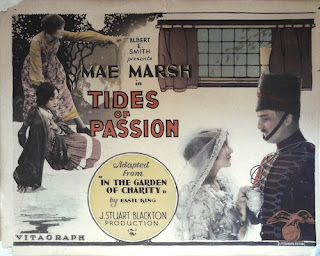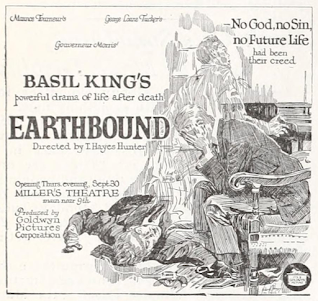Robert J.C. Stead
Toronto: Musson , 1916
347 pages
There's something about Mary in these early pages. Lithe and beautiful, she is not "a daughter of the sturdy backwoods pioneers, bred to hard work in field and barnyard," rather "she was sprung from gentler stock." Mary is also the only character in this novel to demonstrate a sense of humour, as when she ribs John:
“Always at your studies,” she cried, as he sprang eagerly to his feet. “You must be seeking a professorship. But I suppose you have to be always brushing up,” she continued, banteringly. “Your oldest pupil must be—let me see—not less than eight?”Clever and quick, Mary was onto her fiancé from the start. “I declare, if it isn’t Manitoba!" she says, snatching a map from his hands. "What next? Siberia or Patagonia? I thought you were still in the Eastern Townships.”
 |
| Robert J.C. Stead Bookseller & Stationer, October 1916 |
Mrs. Grant was the proud possessor of a very modern labour- saver in the shape of a clothes-wringer, as a consequence of which wash-day was rotated throughout the community, and it was well known that Mrs. Riles and Mrs. Harris had to do their churning alternately.Stead takes great care here. This is not drudgery, rather progress, with each couple striving for a better life. The most dramatic pages are set after the first harvest, reaching a climax in the fifth chapter when, during a winter storm, John abducts a drunken doctor to aid with the delivery of Allan, his first child.
 |
| cliquez pour agrandir |
He saw the light ahead, but it was now a phantom of the imagination. He said, “When I am worth ten thousand I will have reached it”; when he was worth ten thousand he found the faithless light had moved on to twenty-five thousand. He said, “When I am worth twenty-five thousand I will have reached it”; when he was worth twenty-five thousand he saw the glow still ahead, beckoning him on to fifty thousand. It never occurred to him to slacken his pace—to allow his mind a rest from its concentration; if he had paused and looked about he might, even yet, have recognized the distant lighthouse on the reef about the wreck of his ideals. But to stop now might mean losing sight of his goal, and John Harris held nothing in heaven or earth so great as its attainment.The John of the early chapters has become crude; even his whole manner of speech has changed. Mary too is transformed, but only physically. The years have taken a toll, "the shoulders, in mute testimony to much hard labour of the hands, had drooped forward over the deepening chest; the hair was thinner, and farther back above the forehead, and streaked with grey at the temples; the mouth lacked the rosy sensuousness of youth, and sat now in a mould, half of resolution, half submission."
The community formed a quarter-century earlier in those railcars is already a thing of the past. Though one of the most prosperous homesteaders, John cannot help but compare himself to others. Wanting more, he teams up with neighbouring homesteader Hirim Riles. They plan to go out to Alberta, the new frontier, and procure four or five tracts of free land. John will set up a homestead on the first and Riles will establish another on the second. The third, four and possibly fifth would be worked by men who will be provided grub and a small wage during the three years required to secure titles which would subsequently be be transferred to Harris and Riles:
This was strictly against the law, but the two pioneers felt no sense of crime or shame for their plans, but rather congratulated themselves upon their cunning though by no means original scheme to evade the regulations.Indeed, by no means an original scheme. There is no way the two men would've succeeded, though the scheme does serve to bring further notice to John's descent from the decent, dedicated Eastern Townships schoolteacher with whom Marys fell in love.
The last fifteen chapters are far less interesting than the first five, in part because there isn't nearly so much about the pioneer experience, and in part because too many of its pages focus on a crime that takes too long to unfold. I suppose there is a lesson to be learned about working with another when committing a crime, but only if one has never heard of the time-worn observation on honour amongst thieves.
I leave it for you to judge.
The novel is available online here thanks to the Internet Archive.


























































